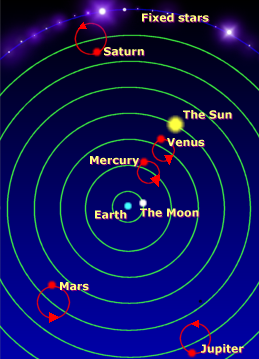Nicholas Copernicus (1473 - 1543)
Often thought of as one of the pioneers of modern astronomy, Nicholas Copernicus is most famous for shaking up the scientific and religious communities. At Before Copernicus' time, it was taught that Earth was at the centre of the Universe. Religious leaders used evidence from the Bible to back up this claim and people accepted this as fact. However, by observing the night skies, Copernicus noticed that the movements of the Sun, Moon and planets didn't really make sense based on the understanding that the Earth was at the centre of them all. But, by putting the Sunat the centre, and calculating the orbits of the known planets, suddenly it all worked!
As his ideas could be seen as questioning the teachings of both religious and scientific minds, Copernicus had to be completely certain that his theories were correct and it took a lot of persuasion until he decided to publish them. The book De revolutionibus orbium coelestium (On The Revolutions of the Celestial Spheres) was published after his death, although it is rumoured that he was given the first copy while on his deathbed in 1543. At first it didn't have a major impact. It was only after other scientists, most famously Galileo Galilei, publicly backed the "Copernican System". Church leaders of course opposed a Sun-centred, or heliocentric, system and banned Copernicus' book. It stayed on the Vatican's banned list until 1758. Galilei was later arrested for "following the position of Copernicus".
Copernicus was born in 1473 in Toru?, in the old Kingdom of Poland. Although he studied law, medicine, canon and civil law during his years at University, he became interested in astronomy. His career was actually in the Catholic church and he carried out his religious duties devoutly. He never intended to oppose the church by making his theories about a Sun-centred system public - and in fact feared scientific condemnation rather than religious. He worked for the church for most of his life, retiring only through ill health. He was convinced to publish his ideas late on in his life. He died in 1543 after entering a coma from a stroke. It is rumoured that after receiving the first copy of his book, he woke from his coma, saw his book, and then died.







